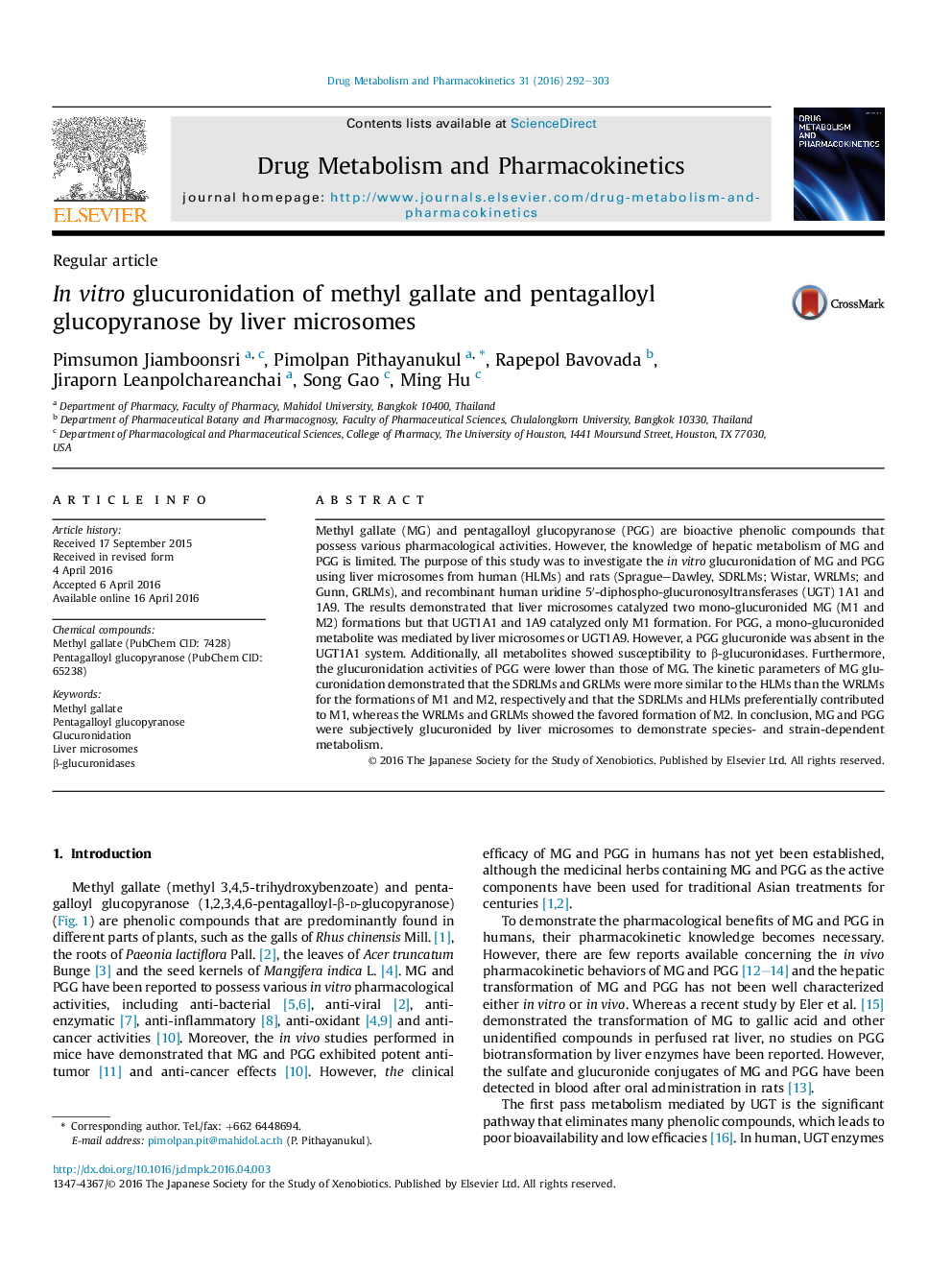| Article ID | Journal | Published Year | Pages | File Type |
|---|---|---|---|---|
| 5547195 | Drug Metabolism and Pharmacokinetics | 2016 | 12 Pages |
Methyl gallate (MG) and pentagalloyl glucopyranose (PGG) are bioactive phenolic compounds that possess various pharmacological activities. However, the knowledge of hepatic metabolism of MG and PGG is limited. The purpose of this study was to investigate the in vitro glucuronidation of MG and PGG using liver microsomes from human (HLMs) and rats (Sprague-Dawley, SDRLMs; Wistar, WRLMs; and Gunn, GRLMs), and recombinant human uridine 5â²-diphospho-glucuronosyltransferases (UGT) 1A1 and 1A9. The results demonstrated that liver microsomes catalyzed two mono-glucuronided MG (M1 and M2) formations but that UGT1A1 and 1A9 catalyzed only M1 formation. For PGG, a mono-glucuronided metabolite was mediated by liver microsomes or UGT1A9. However, a PGG glucuronide was absent in the UGT1A1 system. Additionally, all metabolites showed susceptibility to β-glucuronidases. Furthermore, the glucuronidation activities of PGG were lower than those of MG. The kinetic parameters of MG glucuronidation demonstrated that the SDRLMs and GRLMs were more similar to the HLMs than the WRLMs for the formations of M1 and M2, respectively and that the SDRLMs and HLMs preferentially contributed to M1, whereas the WRLMs and GRLMs showed the favored formation of M2. In conclusion, MG and PGG were subjectively glucuronided by liver microsomes to demonstrate species- and strain-dependent metabolism.
Graphical abstractDownload high-res image (166KB)Download full-size image
